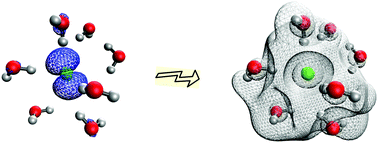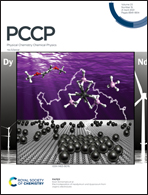Failure of molecular dynamics to provide appropriate structures for quantum mechanical description of the aqueous chloride ion charge-transfer-to-solvent ultraviolet spectrum
Abstract
The lowest band in the charge-transfer-to-solvent ultraviolet absorption spectrum of aqueous chloride ion is studied by experiment and computation. Interestingly, the experiments indicate that at concentrations up to at least 0.25 M, where calculations indicate ion pairing to be significant, there is no notable effect of ionic strength on the spectrum. The experimental spectra are fitted to aid comparison with computations. Classical molecular dynamic simulations are carried out on dilute aqueous Cl−, Na+, and NaCl, producing radial distribution functions in reasonable agreement with experiment and, for NaCl, clear evidence of ion pairing. Clusters are extracted from the simulations for quantum mechanical excited state calculations. Accurate ab initio coupled-cluster benchmark calculations on a small number of representative clusters are carried out and used to identify and validate an efficient protocol based on time-dependent density functional theory. The latter is used to carry out quantum mechanical calculations on thousands of clusters. The resulting computed spectrum is in excellent agreement with experiment for the peak position, with little influence from ion pairing, but is in qualitative disagreement on the width, being only about half as wide. It is concluded that simulation by classical molecular dynamics fails to provide an adequate variety of structures to explain the experimental CTTS spectrum of aqueous Cl−.



 Please wait while we load your content...
Please wait while we load your content...